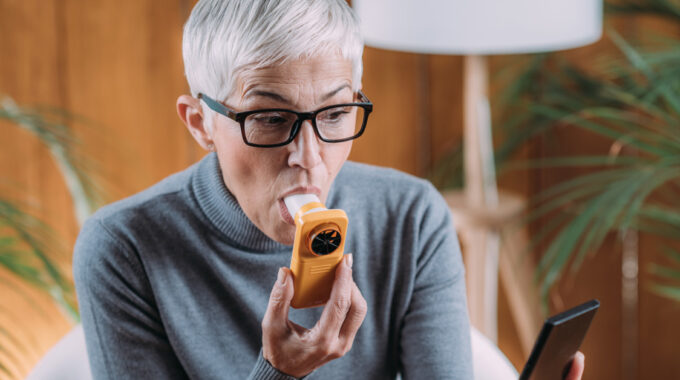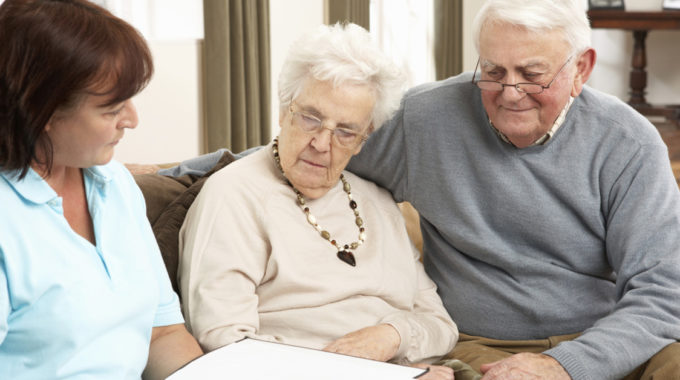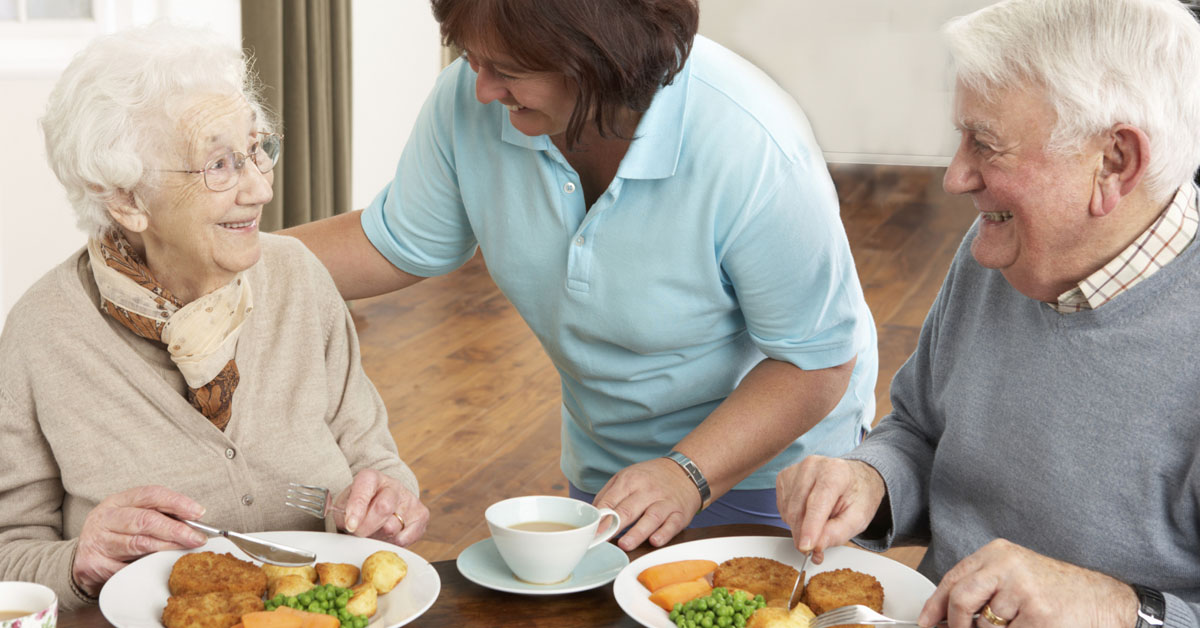
Home Health Rehab Good for COPD
A recent study shows how home health pulmonary rehabilitation typically doubles breathing capacity in COPD.1 Roughly 5% of Americans live with a COPD diagnosis.2 It can cause pain and discomfort with breathing, reduced ability to exercise, and difficulty with speech. Worse yet, each year, roughly one in five people with moderate to severe COPD experience an acute flareup resulting in an ER or urgent care visit. These situations commonly lead to hospitalization as well.2 Home health rehab stands out as a way to improve a person’s experience with COPD. Despite the fact that Medicare pays 100% for qualified patients, it’s often overlooked.
What is COPD?
COPD stands for chronic obstructive pulmonary disease. It encompasses a group of more specific lung diseases that make it hard to breathe and that get worse over time. This includes emphysema and chronic bronchitis. Normally, the airways and air sacs in your lungs are elastic or stretchy. When you breathe in, the airways bring air to the air sacs. The air sacs fill up with air, like a small balloon. When you breathe out, the air sacs deflate, and the air goes out. If you have COPD, less air flows in and out of your airways because of one or more problems:
- The airways and air sacs in your lungs become less elastic.
- The walls between many of the air sacs are destroyed.
- The walls of the airways become thick and inflamed.
- The airways make more mucus than usual and can become clogged.
How Effective is Home Health Rehab for COPD?
People can receive rehabilitation and home exercise plans to improve their experience with COPD and lessen the rate of decline over time. When patient’s meet Medicare’s definition of homebound, they can even receive this rehab in the comfort of home with Medicare paying 100%. How effective is home rehab? Recently, Nina Bausek, PHD published a simple but useful measurement of what people might expect when they receive COPD rehab at home.1
Patients received fairly standard home health rehabilitation for COPD. Researchers took before and after measures. Patients received at least eight home health visits for patient education, upper limb exercises, lower limb exercises, cardiovascular fitness, and respiratory muscle training. It was a relatively short course of home health. The ability to rise from a seated position and then sound the letter “A” increased from an average of 5.8 seconds to 12.1 seconds. That measure is called maximum phonation time. The maximum speed at which patients could exhale increased from an average of 191 liters per minute to 325 liters per minute. That measure is called the peak expiratory flow. Not only did the averages improve; 100% of patients in this study saw some sort of improvement.
Past Research on Home Health Rehab for COPD
The recent study adds to an established body of COPD-specific research. The research demonstrates how home-based nursing, therapy, or combinations thereof can achieve a number of benefits:4-9
- Reduce overall healthcare use and expense.
- Decrease hospitalizations 27%.
- Improve survival.
- Decrease emergency department visits 21%.
- Improve exercise tolerance.
- Reduce pain and discomfort from breathing.
References
- Bausek N, Havenga L, Aldarondo S. Respiratory muscle training improves speech and pulmonary function in COPD patients in a home health setting-a pilot study. BioRxiv. 2019 Jan 1:523746.
- Tilert T, Paulose-Ram R, Howard D, Butler J, Lee S, Wang MQ. Prevalence and factors associated with self-reported chronic obstructive pulmonary disease among adults aged 40-79: the National Health and Nutrition Examination Survey (NHANES) 2007–2012. EC Pulmonology and Respiratory Medicine. 2018;7(9):650.
- Rubí M, Renom F, Ramis F, Medinas M, Centeno MJ, Górriz M, et al. Effectiveness of pulmonary rehabilitation in reducing health resources use in chronic obstructive pulmonary disease. Arch Phys Med Rehabil. 2010;91: 364–368.
- Coultas DB, Jackson BE, Russo R, Peoples J, Singh KP, Sloan J, et al. Home-based physical activity coaching, physical activity, and health care utilization in chronic obstructive pulmonary disease. Chronic Obstructive Pulmonary Disease Self-Management Activation Research Trial Secondary Outcomes. Ann Am Thorac Soc. 2018;15: 470–478.
- Kessler R, Casan-Clara P, Koehler D, Tognella S, Viejo JL, Dal Negro RW, Díaz-Lobato S, Reissig K, González-Moro JM, Devouassoux G, Chavaillon JM. COMET: a multicomponent home-based disease-management programme versus routine care in severe COPD. European Respiratory Journal. 2018 Jan 1;51(1):1701612.
- Bourbeau J; Julien M, Maltais F, et al. Reduction of hospital utilization in patients with chronic obstructive pulmonary disease: a disease-specific self-management intervention. Arch Intern Med. 2003; 163 (5): 585-91.
- Gadoury M, Schwartzman K, Rouleau M. et al. Self-management reduces both short- and long-term hospitalisation in COPD. Eur Respir J. 2005; 26 (5): 853-7.
- Salman G, Mosier M, Beasley B, et al. Rehabilitation for patients with chronic obstructive pulmonary disease: meta-analysis of randomized controlled trials. J Gen Intern Med. 2003: 18a (3): 213-21.
- Murphy N, Bell C, Costello R. Extending a home from hospital care programme for COPD exacerbations to include pulmonary rehabilitation. Respir Med. 2005; 99(10): 1297-302.






